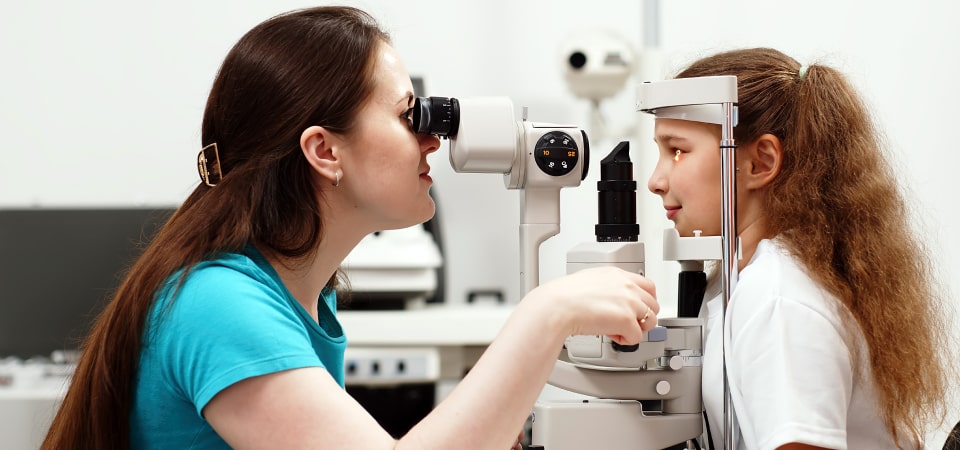
Myopia Management
Our myopia management service helps correct your child’s short-sightedness and slow its progression.
What is myopia?
Myopia, or short-sightedness, is a progressive condition where the eye grows too long, causing distant objects to appear fuzzy while close-up vision remains sharp.
Who is at risk of myopia?
Myopia often affects children. Unfortunately, with more time spent on digital devices, we’re seeing an increase in young eyes at risk of developing the condition.
Key risk factors for myopia are:
- A genetic predisposition, i.e., parents with myopia
- Extensive screen time
- Limited time spent engaged in outdoor activities
- Prolonged close-up work like reading or studying.
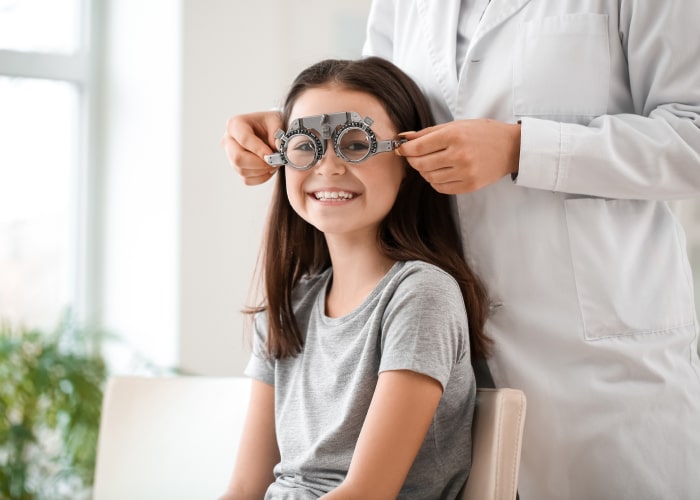
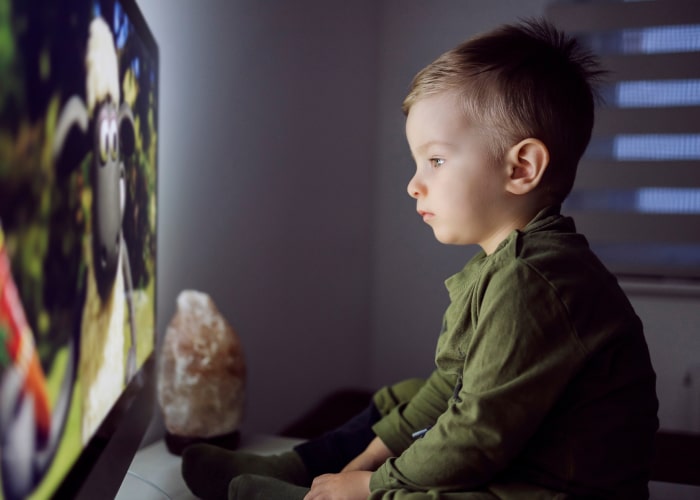
Myopia symptoms
Telltale signs of myopia to look out for in your child include:
- Squinting at distant objects
- Sitting closer than usual to screens or televisions
- Holding books or tablets very close to their face
- Frequent headaches
- Rubbing their eyes more than usual
- Seeming unaware of distant objects or people.
Diagnosing myopia
If your child has myopia, don’t worry. Modern myopia management is proactive, personalised and effective. And the earlier we start it, the higher the chance of success.
Getting a diagnosis
To find out if your child has myopia, we will carry out a comprehensive eye examination and with our child-friendly approach, we’ll make sure it's engaging and fun.
Using state-of-the-art, non-invasive technology, namely our MYAH machine, we’ll measure the length of your child’s eyes. This is a key indicator of myopia and can be measured during their treatment to check how effectively their myopia is being managed.
We will also give you a lifestyle questionnaire for you and/or your child to fill in.
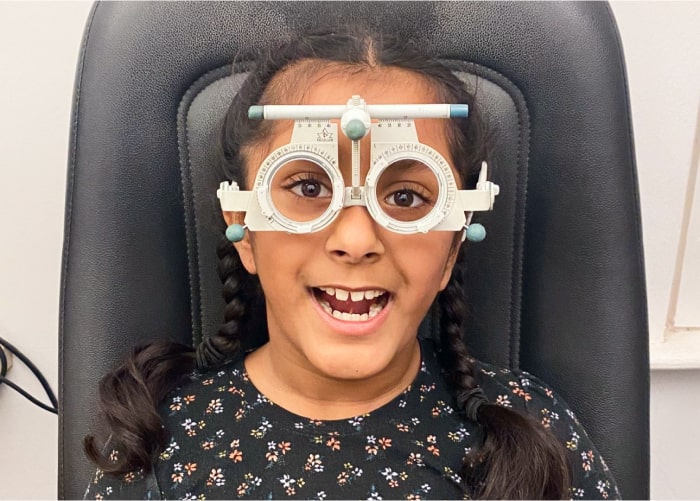
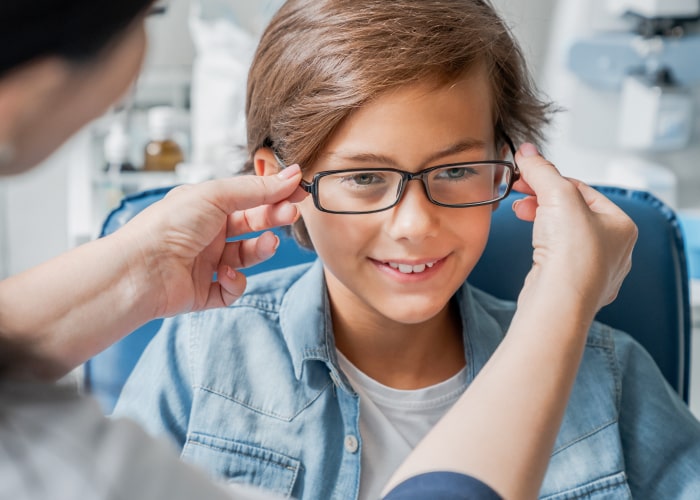
Treatments for myopia
There are several treatments to slow the progression of your child’s myopia, so you can pick the one that best suits their lifestyle and temperament.
We offer specialised spectacles lenses designed to slow myopia from market leaders: HOYA’s MiYOSMART lenses and Essilor’s Stellest lenses.
If your child is ready to wear contact lenses, we offer several choices – MiSight, NaturalVue and Esencia – all of which are soft, disposable contacts for ease of use.
If dealing with glasses or contact lenses all day long isn't practical, for example if they play sports or are a frequent swimmer, then EyeDream’s orthokeratology contacts may be just what you need. These hard contacts are only worn overnight for clearer daytime vision.
Whichever treatment you choose, we’ll regularly monitor your child’s vision and make any necessary adjustments to keep their treatment on track.
Book Your Child an Eye Exam Today
Don’t let myopia impact your child’s quality of life. If you spot any of the telltale signs, book them in for an examination today.
